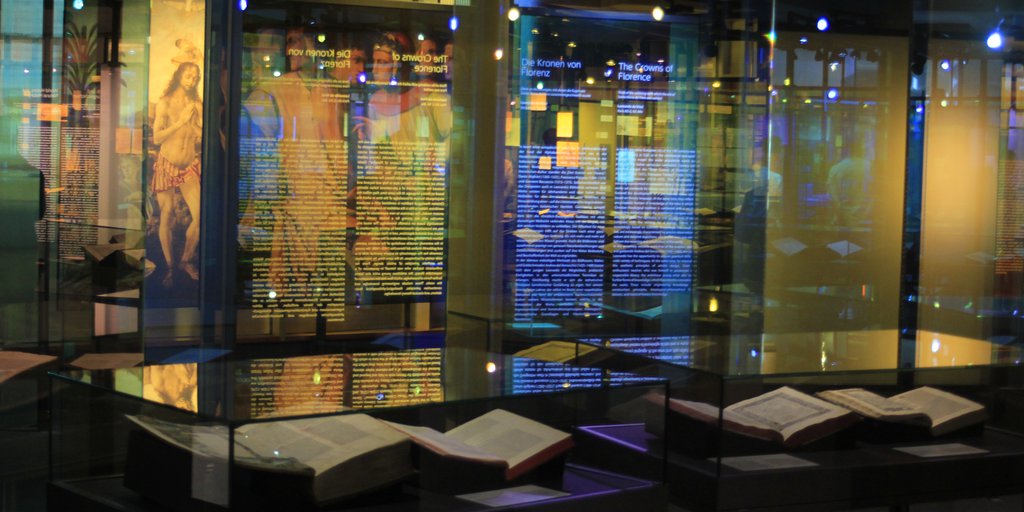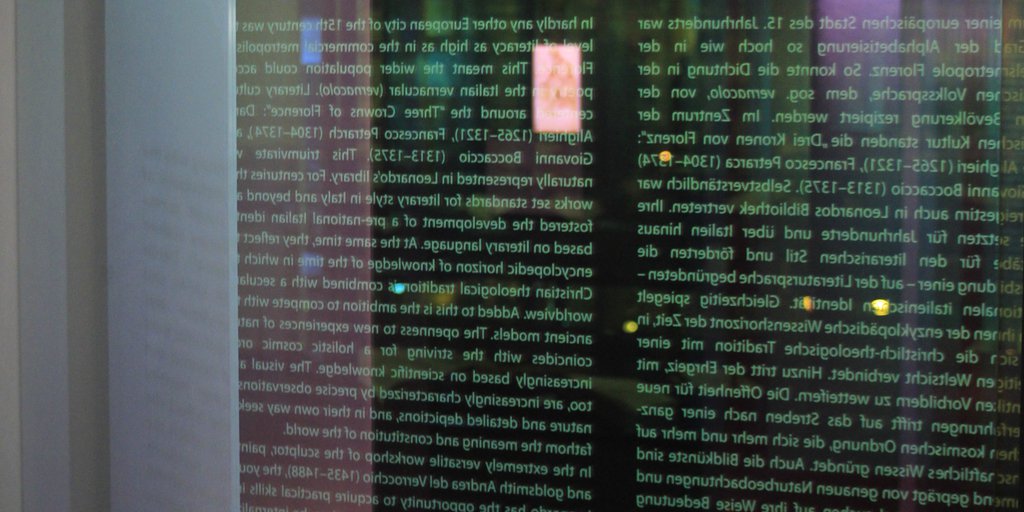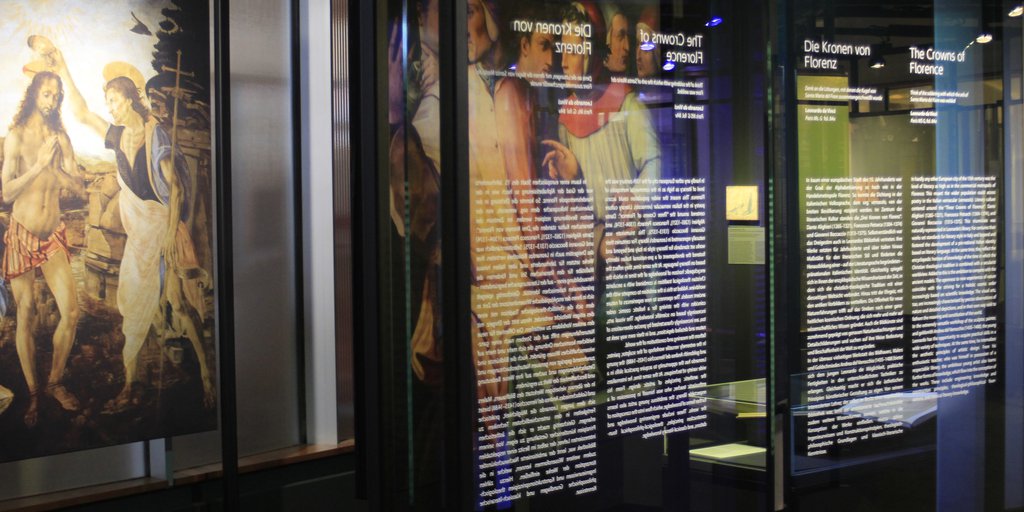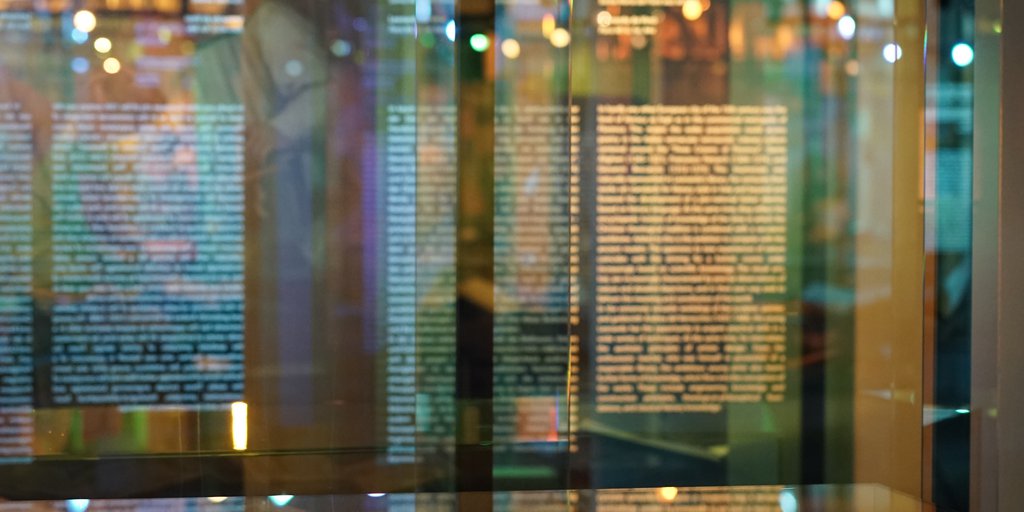
The Crowns of Florence <
Think of the soldering with which the orb of Santa Maria del Fiore was welded.
Leonardo da Vinci
Paris Ms. G, fol. 84v. Translation: Elizabeth Hughes
In hardly any other European city of the 15th century was the level of literacy as high as in the commercial metropolis of Florence. This meant the wider population could access literature in the Italian vernacular (vernacolo). Literary culture centered around the “Three Crowns of Florence”: Dante Alighieri (1265–1321), Francesco Petrarch (1304–1374), and Giovanni Boccaccio (1313–1375). This triumvirate was naturally represented in Leonardo’s library. For centuries their works set standards for literary style in Italy and beyond and fostered the development of a pre-national Italian identity based on literary language. At the same time, they reflect the encyclopedic horizon of knowledge of the time in which the Christian theological tradition is combined with a secularist worldview. Added to this is the ambition to compete with the ancient models. The openness to new experiences of nature coincides with the striving for a holistic cosmic order increasingly based on scientific knowledge. The visual arts, too, are increasingly characterized by precise observations of nature and detailed depictions, and in their own way seek to fathom the meaning and constitution of the world.
In the extremely versatile workshop of the sculptor, painter, and goldsmith Andrea del Verrocchio (1435–1488), the young Leonardo has the opportunity to acquire practical skills in a wide variety of techniques. At the same time, he internalizes the aesthetic principles of artistic design. From his enthusiastic teacher, who was himself in possession of a respectable library, the ambitious young artist also learns further forms of knowledge, which flow into the conception of the works. These include engineering knowledge and construction principles, theological-philosophical foundations, and classical literary knowledge.
Leonardo's Berlin Library: Section 3 <
 | 21.
Commented by Christophorus Landinus. Brescia: Boninus de Boninis, 1487
|
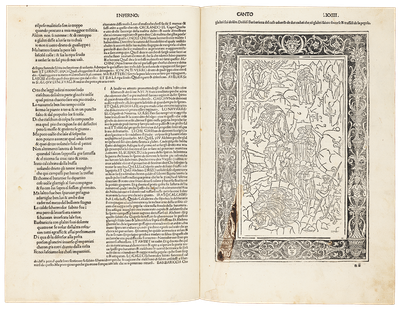
Reading The Divine Comedy influenced the young Leonardo in two respects: First, linguistically the work offered an enormous vocabulary which would ultimately form the basis of Italian as a written language (108 ▲). Second, in terms of the history of ideas, we should not overlook the visionary character of the work, which describes the author’s wanderings in the netherworld, from Hell to Mount Purgatory and the heavenly spheres up to the vision of God in Paradise. Leonardo would have also been interested in the abundance of educational information in this work about astronomy and natural history. The Brescia edition shown here with the commentary by Cristoforo Landino has particularly impressive full-page woodcut illustrations. In canto 23 of the Inferno, for example, Dante and his guide Virgil meet the hypocrites. To atone for their sins they have to drag themselves onward in shining gold cowls that are, in reality, heavy as lead, until they collapse from exhaustion. The high priest Caiaphas, who was responsible for the crucifixion of Jesus Christ and is now impaled himself, serves as a human bridge for them.
References
Bambach, Carmen C. 2019a. Leonardo da Vinci Rediscovered. Vol. 1: The Making of an Artist 1452–1500. 4 vols. New Haven / London: Yale University Press, 434.
Idem. 2019b. Leonardo da Vinci Rediscovered. Vol. 2: The Maturing of a Genius 1485–1506. 4 vols. New Haven / London: Yale University Press, 30.
Idem. 2019c. Leonardo da Vinci Rediscovered. Vol. 3: The Late Years 1506–1519. 4 vols. New Haven / London: Yale University Press, 467 f.
